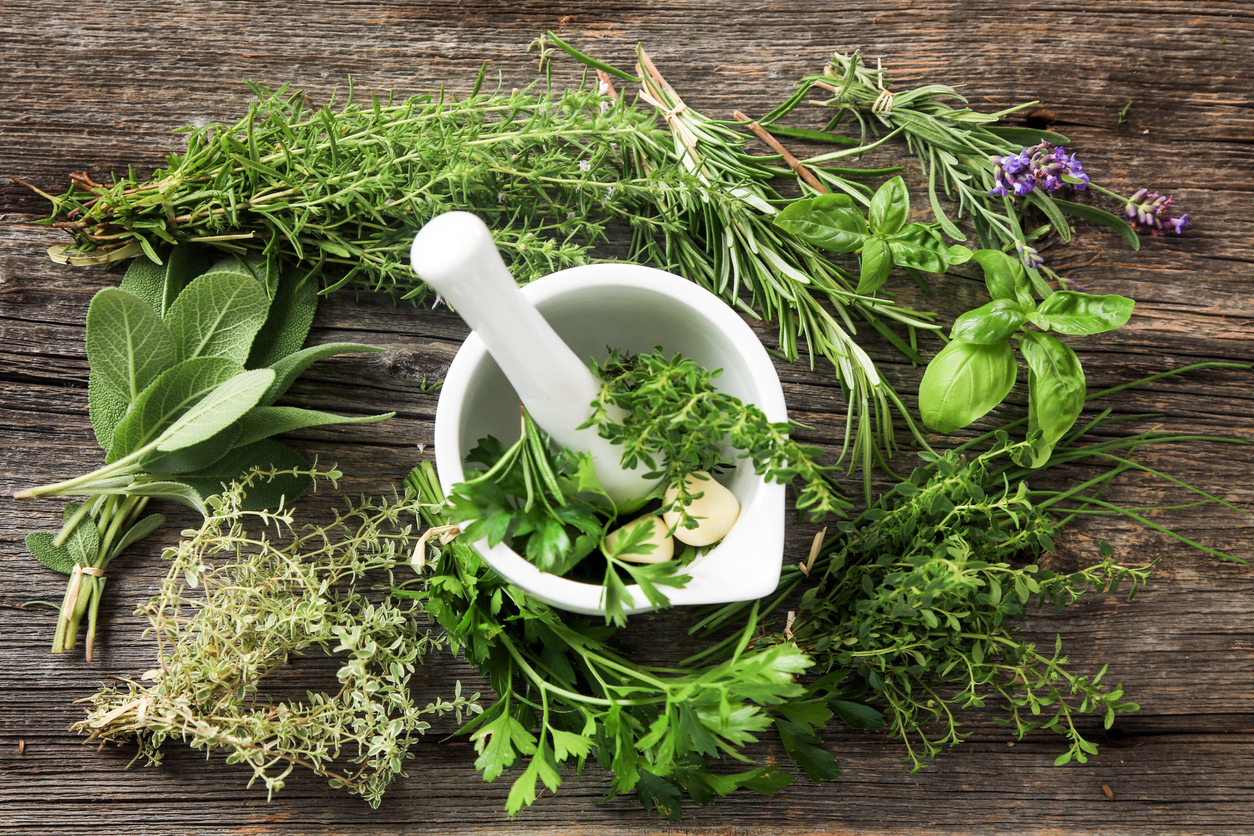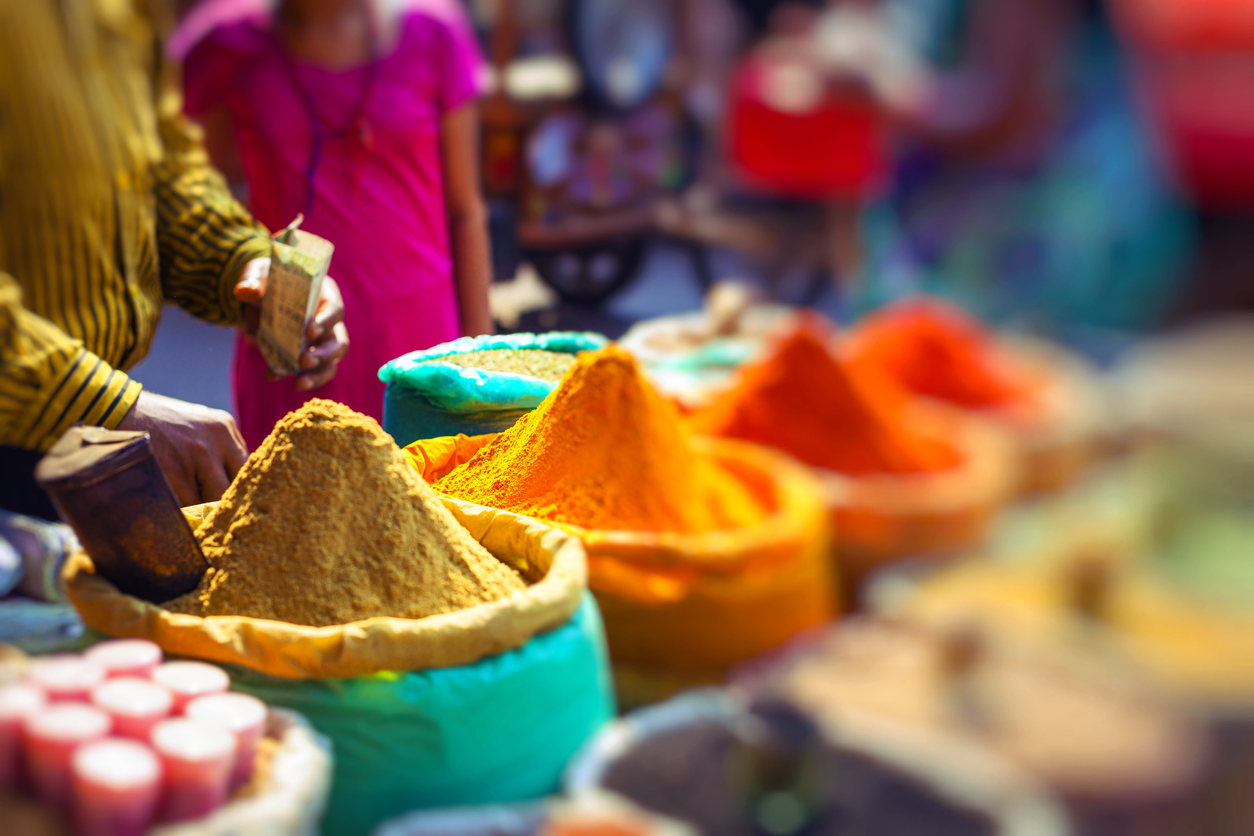A guide to food seasoning: Essential herbs and spices
If you’re getting a little more confident in the kitchen, and want to move beyond simply following recipes and resorting to ready meals, confidence with herbs and spices is a must. Bringing flavour, depth, fragrance and sophistication to a whole range of dishes, effective use of herbs and spices can really elevate your culinary skills.
In this guide, we’re covering the difference between herbs and spices as well as the essential ingredients you need to have in your kitchen cupboard. We’ll delve into the cuisines the different herbs and spices help to improve, as well as basic instructions for use.
What is the difference between herbs and spices?
It can be easy to assume that spices are the granular ingredients that make food spicy and that herbs cover just about everything else. However, there’s a little more to it than that.
Herbs are usually the flower of a plant, either picked fresh or dried to keep them for longer. Spices emanate from different parts of the plant, including the bark, stem, root and seeds. This is why many spices are more valuable than others and pricier than many herbs. Whilst plants will re-flower every year, or even more often, some spices are extracted in a manner which uproots and kills the plant - offering a single harvest.

Furthermore, this is a reason why certain herbs are prevalent in certain national cuisines, whilst spices are more common in foods from different regions. In temperate countries such as Italy and France, herbs are plentiful, which is why they’re heavily used in the cuisine. In warmer, starker climates such as Central America and India - plants may not flower so regularly so flavours are extracted from other parts of the plant (such as seeds, roots and bark), creating spices.
This key difference is a huge determining factor in why different nationalities developed such unique dishes and palates. Also, this can help you pick the herbs and spices you need - the ones you’ll find in your favourite cuisines.
Kitchen cupboard must-have herbs
These five herbs will help you create a series of amazing dishes.
Basil
Best for: Fresh Italian dishes
Peruse the recipe books of any Italian restaurant and you’ll find that basil is central to many of the most beloved dishes. A warming taste of the Mediterranean, it’s great in everything from pizza to pasta and soup to stew.
How to use: If you’re cooking a tomato-based dish, 10 times out of 10, basil will really complement the flavour.
Coriander
Best for: Mexican fiestas
Perhaps the most famous love-it-or-hate-it herb on this list, coriander is not for everyone. However, if you like the fresh bites you’ll find in authentic tacos and burritos, chances are you have a love for coriander. Pairs amazingly well with prawns and seafood dishes, coriander truly elevates easy cuisine.
How to use: Sprinkle on top, rather than mix in. Not only does it allow the freshness of the dish to pop - it also means guests who fall on the hate-it side can just pick it off.
Rosemary
Best for: Deep, hearty stews
Ever wonder how those home-cooked, rustic stews get such a deep, aromatic flavour? There’s a good chance the answer is rosemary. Fragrant, homely and inviting - rosemary pairs exceptionally well with traditional lamb, chicken and sausage dishes. Great in English dishes, even better in French.
How to use: Like the rustic dishes they’re being added to, it’s fine to be a little rustic when adding rosemary - if the stems go into the mix, don’t worry about it.
Thyme
Best for: Unforgettable chicken dishes
Perhaps the herb which best pairs with the UK’s favourite meat, thyme always has a place in our kitchen cupboards. Whether you’re roasting a full bird for Sunday lunch, or you’re creating a sauce to complement a baked fillet - thyme should always be within reach.
How to use: Make sure you add thyme early in the preparation, so you can get the flavour nice and deep.
Mint
Best for: Peas, puds and aperitifs
Mint is perhaps the most identifiable taste on the herb list, and is also maybe the most versatile. It’s great in a pea risotto, essential in so many cocktails and refreshing alongside a scoop or two of sorbet. A really versatile herb, which can easily help you raise your culinary game.
How to use: Try not to cook it down, let its natural flavour sit atop a dish.
Kitchen cupboard must-have spices
Looking to add a little fire to your dishes, look no further.
Turmeric
Best for: Distinctive curry dishes
With a warming, fresh taste and a distinctive colour - you won’t fool anyone when you use turmeric in a curry dish. However, it adds so much to a meal, in terms of flavour and appearance, no kitchen cupboard should be without.
How to use: Be careful with your best pots and pans, turmeric can stain.
Garlic
Best for: Almost everything
If there is one ‘must-have’ ingredient, it’s garlic. Used across almost all cuisines, the distinctive, delicious taste of garlic elevates so many different dishes. From the Middle East to modern British, we’d all be a little worse off without garlic.
How to use: Heavily and often.
Ginger
Best for: A fiery taste of Southeast Asia
Ginger is simultaneously incredibly hot and incredibly fresh - combining the kick of chilli powder with the tang of citrus fruit. Ginger is amazing in Thai, Vietnamese and Chinese dishes - adding a real depth of flavour that sits on the palate.
How to use: Carefully, don’t be fooled if the first spoonful doesn’t seem enough - play it safe with this fiery spice.
Cumin
Best for: Authentic Indian flavours
Tomato-based, cream-based, oven-baked or flashed in the pan - cumin is an absolute essential in so many Indian dishes. It helps to really stimulate the other flavours in the dish and brings heat to the fore.
How to use: Half a teaspoon per serving is usually a good starting point.
Chilli Powder
Best for: Making sure your spicy dishes are just spicy enough
If you’re a fan of spicy food, chilli powder is unsurprisingly a great way to ramp up the heat. Everyone has a different level of tolerance, so we’d suggest cooking slowly and adding just a little more chilli powder at a time - finding your perfect level.
How to use: Add to the dry ingredients before adding the stock or sauce base.
We hope this guide has helped you, and you’re able to improve your recipe list with a little assistance from your herb and spice rack.
We hope you’ll be able to take these tips and improve your skills in the kitchen. For further help, the full range of Breville products - whatever you’re looking for - can all be found at our homepage here.



